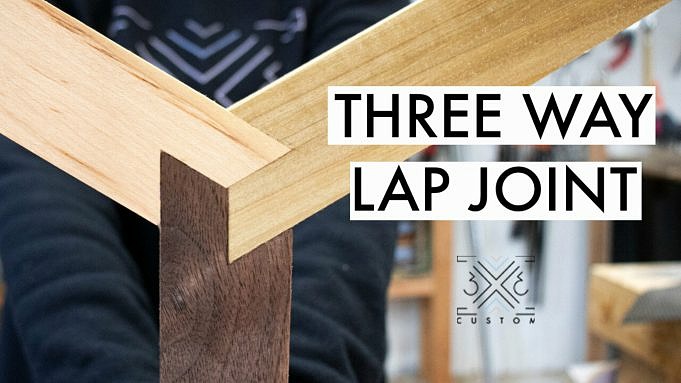Although rabbet joints are commonly used to attach case backs and fronts in period work they can also be found in other locations. In pieces from the 17th century and earlier, such as the Mannerist dresser shown above, drawer fronts often are rabbeted and the drawer sides simply nailed into that rabbet. Later, in the early 18th century, drawer sides were rabbeted to hold the drawer bottoms. The drawer bottoms are usually nailed into the rabbets. Once the drawer bottoms have been covered, a thin piece made of wood known as a drawer slip is applied to the surface. This provides the drawer with a stable and durable surface.
There are many ways to make rabbets, but they all start with laying them out using the marking gauge or ruler.
Proper layout for a rabbet joint. To help prevent errors, I like to mark the wood to be removed.
Your tool set, your skills and your preferences will determine how you remove the wood. You can chisel to your lines.
A rabbet can be cut quickly and efficiently with a chisel. You don’t want to have a bad day if you keep your hands behind the cutting edge.
To cut the lines you can also use a rabbet plan and your fingers to create a fence.
The rabbet can also be cut with the rabbet plane using your fingers as a fence, as shown. This tool also cleans up rabbets cut with a chisel.
Perhaps the most reliable way to achieve a square rabbet is to use the moving fillister plane.
Although designed to cut across the grain, the moving fillister plane makes cutting rabbet joints quick, easy and repeatable, due to its movable fence and depth stop.
When using this and all other fenced tools, it is important that your left hand only push the tools fence into the reference edge, and that your right hand only push the tool straight forward and down into the work. You will almost certainly fail to cut square rabbets if you try to steer the tool using your right hand, or push it forward with your left.
You can find more information about period-accurate furniture construction in With Saw, Plane & Chisel, by Zachary Dillinger. It is available now.
Recommendations for Product
Here are some supplies and tools we find essential in our everyday work around the shop. We may receive a commission from sales referred by our links; however, we have carefully selected these products for their usefulness and quality.



